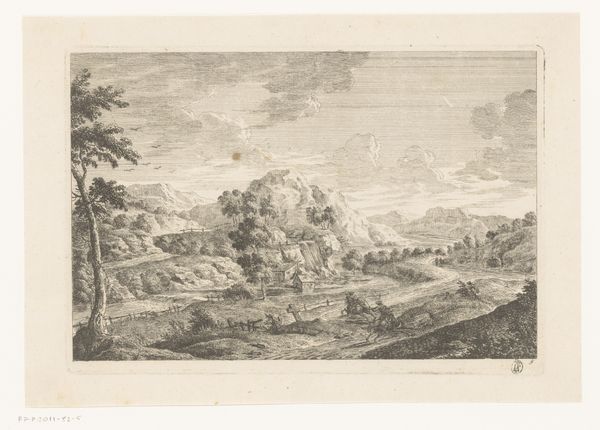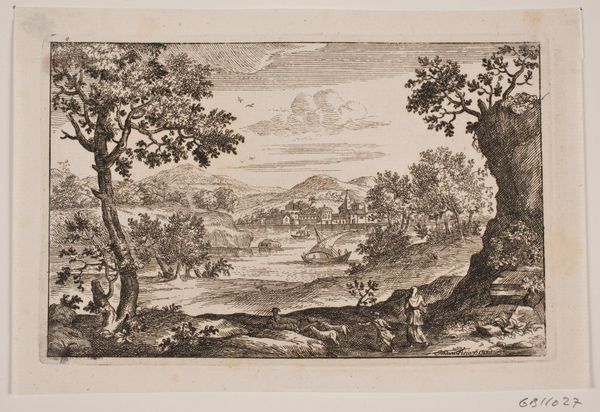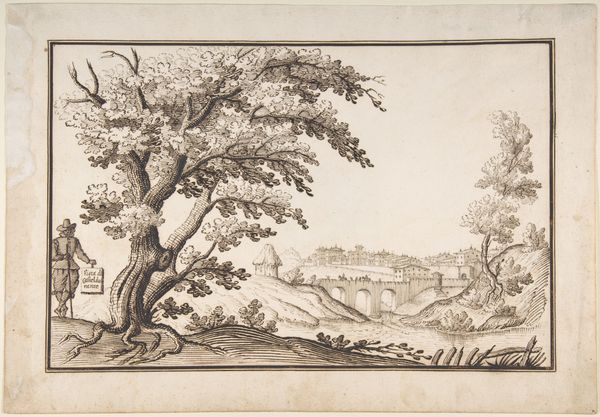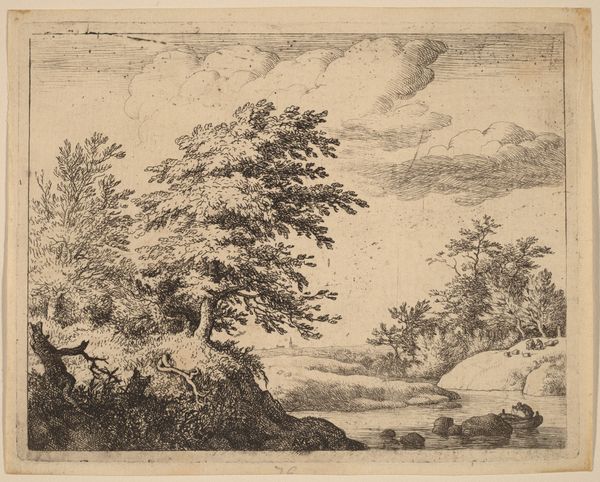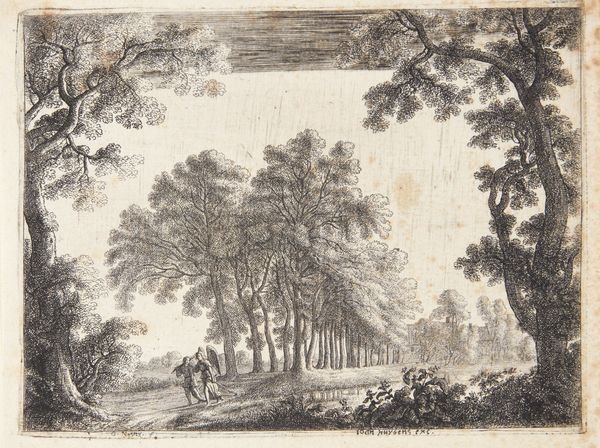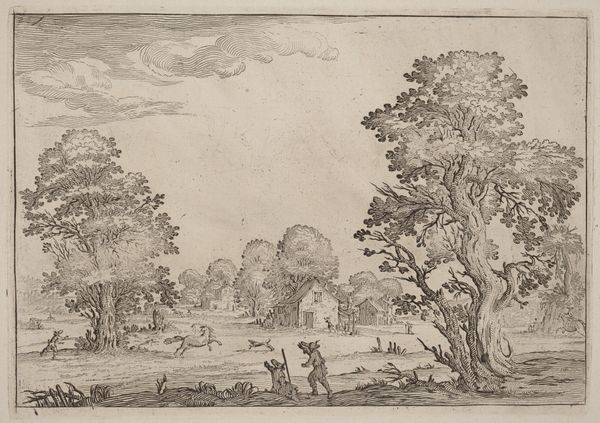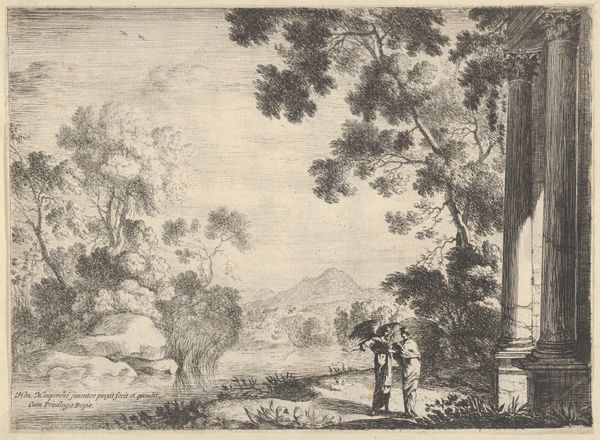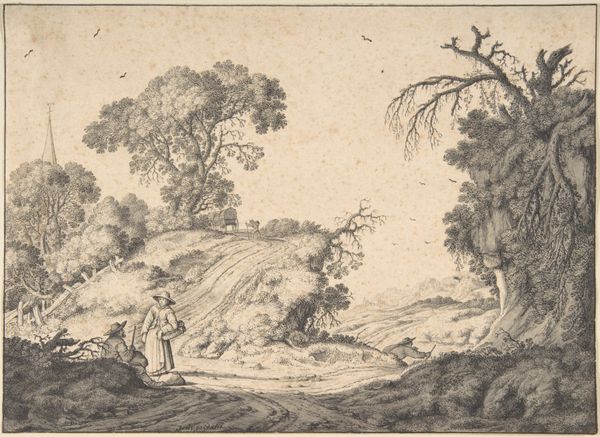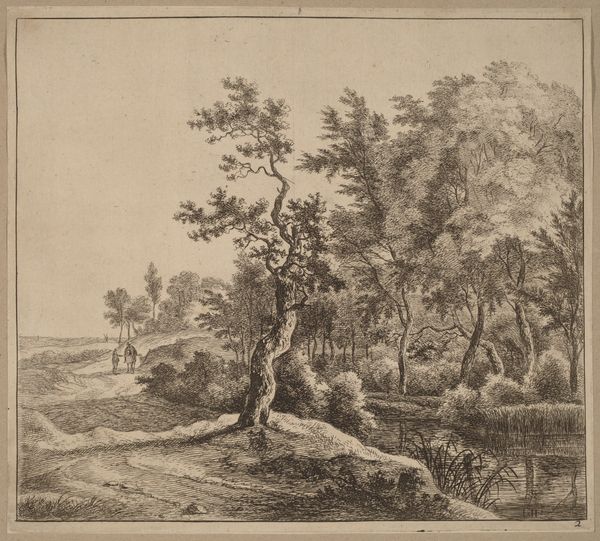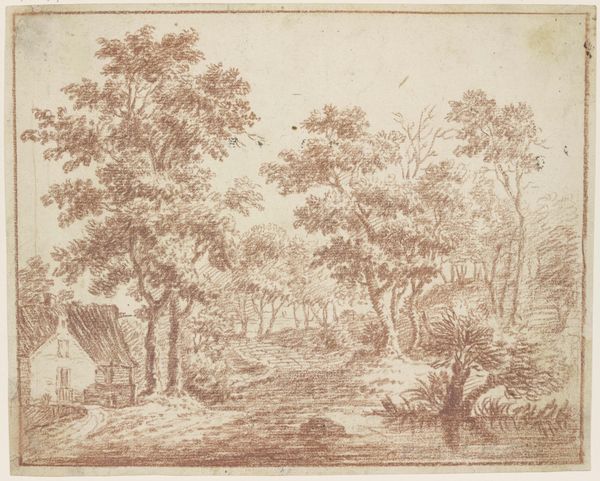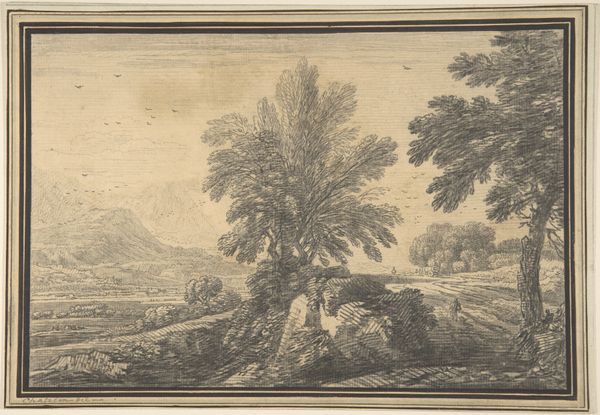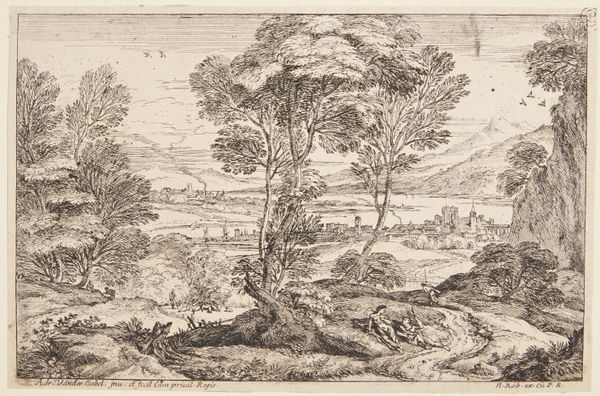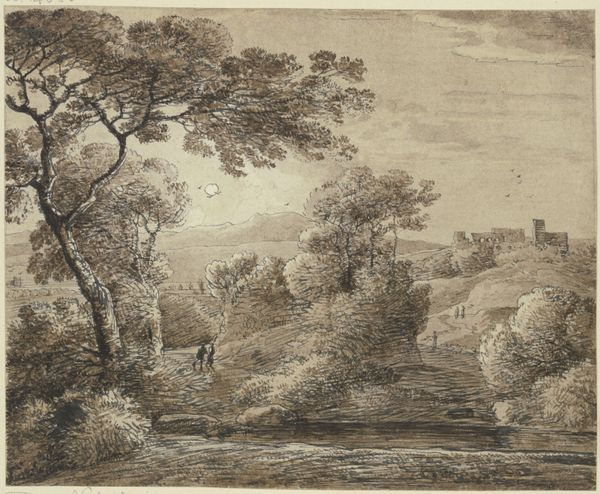
drawing, print, paper, ink
#
portrait
#
drawing
#
ink painting
# print
#
human-figures
#
dog
#
landscape
#
figuration
#
paper
#
ink
#
15_18th-century
#
line
#
genre-painting
#
history-painting
Dimensions: sheet: 14 3/16 x 18 5/8 in. (36 x 47.3 cm)
Copyright: Public Domain
Editor: This is "Landscape with Figures and Fortifications" created between 1750 and 1780 by Guercino. It’s an ink drawing on paper, currently housed at The Met. It feels quite whimsical to me. How do you interpret this work? Curator: I am intrigued by the medium itself. The use of ink on paper during this period suggests a departure from more traditional, hierarchical painting practices. The availability of paper, and the ease of working with ink, made art production more accessible. Do you think that shift democratized artistic creation to a degree? Editor: That’s interesting. I never thought about it in terms of accessibility. It makes sense though; were these types of drawings meant for a broader audience, perhaps outside the elite? Curator: Possibly. We also have to consider the labor involved. Unlike a large-scale oil painting, this drawing could have been produced relatively quickly and with less reliance on assistants, offering the artist greater control over the process. Notice the delicate cross-hatching and line work. What do they convey to you? Editor: It shows skill, of course, but the relative ease perhaps also speaks to its purpose. It wasn't as labourious to create as the art made for patrons and churches, suggesting these drawings served as preparatory sketches. Would it be accurate to say that such a drawing helps bridge the gap between the artist’s idea and its eventual materialization into something bigger? Curator: Precisely. And considering the fortifications, and human figures it also suggests social narratives of its time. Editor: Fascinating. I'll never look at simple ink drawings the same way! Curator: Understanding the materiality and means of production offers us new avenues to understand these works and the contexts of the time.
Comments
No comments
Be the first to comment and join the conversation on the ultimate creative platform.

